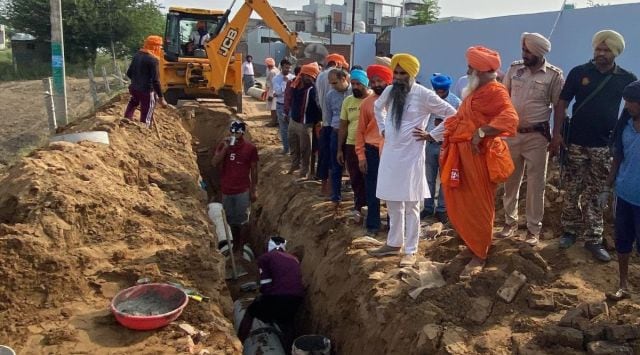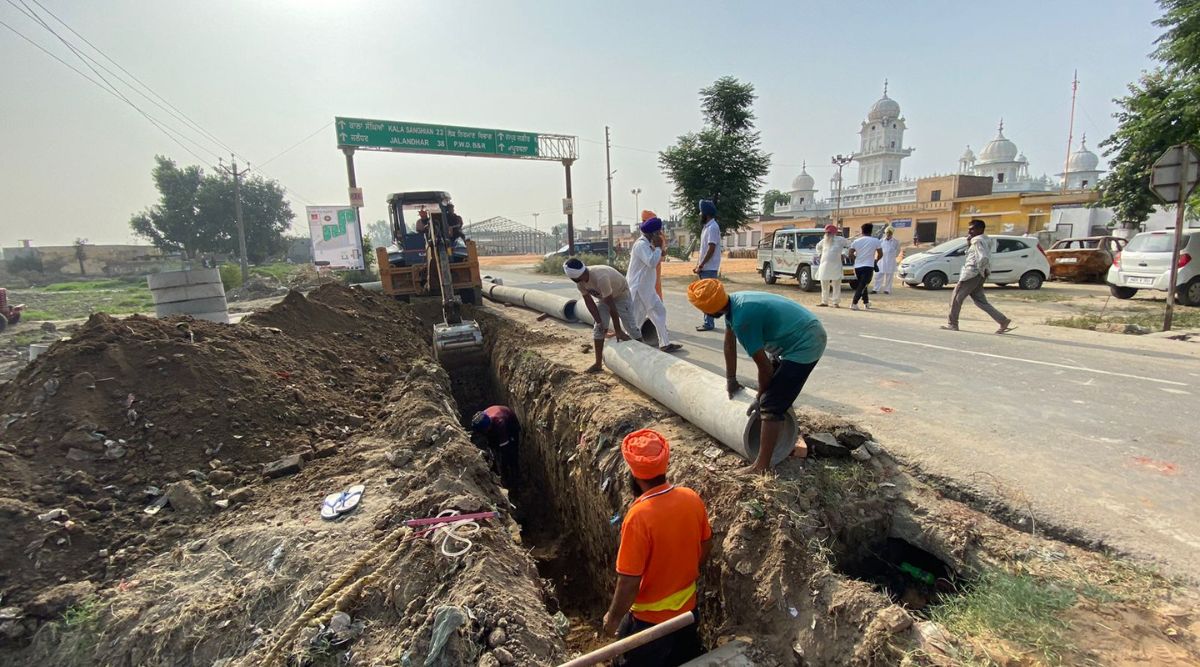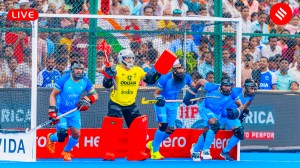In a Kapurthala village, sewerage system laid out in record 10 hours under Seechewal model
Officials of the Water and Sewer Board Department were also present throughout the process to observe these teams laying the sewerage system all in a day.
 The Seechewal model has been successfully implemented in over 200 villages in Punjab and has even been adopted by the Central Government for cleaning the country's largest river, the Ganga. (Express Photo)
The Seechewal model has been successfully implemented in over 200 villages in Punjab and has even been adopted by the Central Government for cleaning the country's largest river, the Ganga. (Express Photo) On Sunday morning, residents of Keedi in Punjab’s Kapurthala district saw eight JCB machines, six teams comprising 14 experienced members each, and 350 workers arrive at their village. The teams had been formed under the leadership of environmentalist and Rajya Sabha Member Baba Balbir Singh Seechewal to lay out a sewerage system for the village.
After offering prayers at a gurdwara, Baba Seechewal set the target to complete the project within a day. The teams began digging up and laying down 350 pipes according to a pre-established plan that covered the entire village, extending in front of each household and along the streets. By evening, the sewerage system under the Seechewal model, developed by Baba Seechewal in 1999, had been successfully laid.
These pipes will collect sewage water from each household and direct it to a common water treatment plant constructed earlier and will be utilised for irrigation purposes. Officials of the Water and Sewer Board Department were also present throughout the process to observe these teams laying the sewerage system all in a day.
Village Sarpanch Sulkhan Singh said the single-day sewer laying operation conducted by Baba Seechewal and his teams shows the system is not as complicated as claimed by government officials, who he said often took years to lay down pipes in a particular area. He said the officials saw the process being completed in a day.
As the work began, village residents also actively participated in the process.
 Baba Seechewal emphasised this model is not limited to a specific process but has a vast scope and is upgraded from time to time. (Express Photo)
Baba Seechewal emphasised this model is not limited to a specific process but has a vast scope and is upgraded from time to time. (Express Photo)
Before this, residents said sewage water frequently flooded the village streets, causing a foul odour. “It used to be very difficult to move around our village due to the accumulation of sewer water in front of houses and on the streets. However, now such unpleasant scenes of dirty water will no longer be visible in the village,” said villager Manjit Singh.
The teams have previously worked on sewage projects in nearly 200 villages across Punjab, mainly in the state’s Kapurthala and Jalandhar districts. The expenses to lay down the sewerage was covered by a few NRIs, Baba Seechewal, and other contributors.
Baba Seechewal said a project to lay sewerage was initiated in three villages, including Dalla, Keedi, and Ugrupur, located next to each other, with the aim of making Dalla a model village for Punjab. Dalla holds historical importance as Sikh Gurus and renowned religious personalities have visited the village.
Baba Sukhjit Singh, a senior team member who oversees the entire project, pointed out that the common belief that laying sewerage in villages is a difficult and costly affair has been disproven by Baba Seechewal. Through the Seechewal model of sewer water treatment, sewage water is used for irrigation purposes after a thorough cleaning, he added.
Dr Sunny Ahluwalia, Chairman, Punjab Sewerage Board, along with the superintendent engineer of the Sewerage Board, executive engineer, and SDO, were also present at the site to witness the process. Several religious leaders and officials were also present.
Baba Seechewal emphasised this model is not limited to a specific process but has a vast scope and is upgraded from time to time. The Seechewal model has been successfully implemented in over 200 villages in Punjab and has even been adopted by the Central Government for cleaning the country’s largest river, the Ganga.
Members of Panchayats of nearly 500 villages located on the banks of the Ganga even visited Jalandhar to see the Seechewal model being implemented so they could deploy the plan to avoid discharging of sewer water in the river. Chief ministers of several states have also seen this model at work in the Seechewal village in the state’s Jalandhar district.







